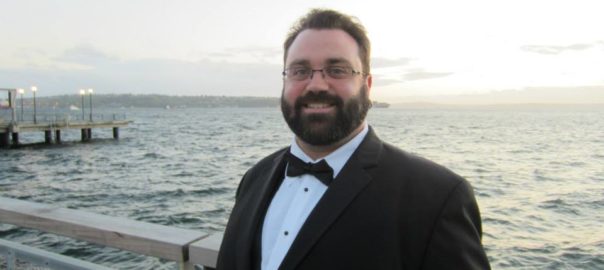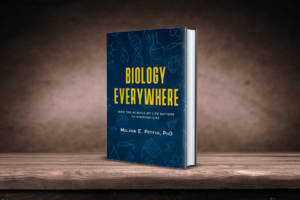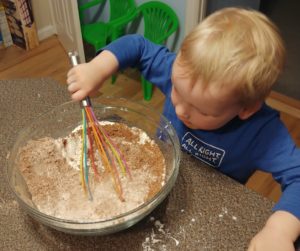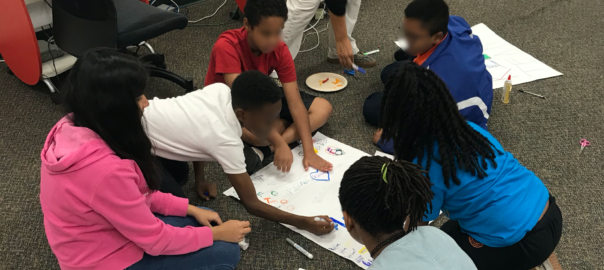by Aditya Vishwanath
Aditya Vishwanath is a PhD candidate and Knight-Hennessy scholar in the Learning Sciences program at the Stanford Graduate School of Education. With his advisors Roy Pea and Jeremy Bailenson, Aditya researches the merits of immersive virtual reality for learning. He is also the co-founder of Inspirit, a 3D and VR lab platform that offers immersive simulations for STEM education.
It is Spring 2015, and schools around the country are being visited by colorful Subarus packed with new ‘Google Cardboard’ headsets: a virtual reality platform that promised to be affordable for classrooms around the world. We imagined the VR platform might be a killer app, which in the tech world means it would make a major impact and everyone would want it. It was called Expeditions and it offered a suite of 360-degree virtual ‘field-trips’ to almost anywhere on the planet, the moon, and inside the human body. I was lucky to be part of a project team from Georgia Tech in 2015 that brought Google Expeditions to a low-income after-school center in Mumbai. Our students and teachers were thrilled to visit the seven wonders of the world or explore a 3D rendering of the human heart with existing basic $30 Android phones and a standard 3G internet connection. Following this project, our team introduced Google Cardboard to a charter school in Atlanta, a Title I school near the Georgia-Tennessee border, and many suburban public schools. Again, more excitement from all involved!
Unfortunately, today, none of the schools we visited in India or the US use Google Expeditions, and our cardboard headsets mostly collect dust on the library shelf. It turns out that the field trips were too disconnected from the syllabi and lesson plans of the teachers. It is 2020, and in a pandemic-hit world where the stage was set for VR and apps like Expeditions to shine, why don’t we see use of this technology in classrooms or the home? What went wrong?
A few numbers: 81% of the USA owns a smartphone and recent statistics show that over 90% Americans live in an area that has access to 4G internet. Shouldn’t we, at the very least, expect to see some use of basic $10 Google Cardboard VR content in classrooms, given the amount of 360-degree field trip content available out there? Clearly, the challenge at hand is not limited to hardware and infrastructural costs of VR. Prices are rapidly falling and access to high-quality VR hardware is steadily improving. So what are some other bottlenecks beyond the technical and cost barriers that we would need to overcome to make VR mainstream in K12? And what can we learn from the Expeditions pilots?
Curriculum and standards alignment
Despite the proliferation of VR education content, there is still a gap between the everyday activities of the classroom and the suite of VR offerings out there. On the cusp of 2020, VR is still a very new medium. And there is still not enough K12 content available to incentivize a school, district, or classroom to invest in this technology. For most teachers, VR is that one-off underwater coral reef educational experience you used with your students in 2016, and now the headsets collect dust on a shelf. To overcome this gap between content libraries and everyday classroom use, content creators will need to work with curriculum experts to better align content with standards, curriculum, and possibly even develop robust and flexible lesson plans that can support frequent (and meaningful) use.
Integrating pedagogy
VR is new, and with this, it carries a certain charm or ‘charisma’. Most people are overwhelmed by the very first time they experience VR, not because the underlying content experience was good, but because the experience was new. Novelty wears off. Will VR still stimulate the same curiosity and excitement it created the very first time? Scholars like Roy Pea and Chris Dede have demonstrated, through years of research on virtual environments, that designing experiences with sound pedagogical methods allow you to move past novelty. Implementing teaching and learning methods with VR will maintain engagement beyond the initial novelty-phase. Most teachers already know this from their experiences with other digital aids. Most experimental research with VR till date has occurred in expensive labs, often many degrees removed from the complexities of an everyday classroom. In the coming years, we need to witness more real-world VR deployments and studies alongside the rapid growth of VR-education companies.
Tapping into the unique capabilities of VR
Most content creators come to VR with the question, “How can VR outperform video” but that is the wrong question to ask. Instead, we should ask, “What can VR offer that is impossible to offer with video, or any other medium before VR?” Researchers such as Jeremy Bailenson have consistently advocated that tasks that are physically expensive, dangerous, or impossible to simulate or experience are ideal candidates for VR. It is critical that educators ask fundamental questions: how is VR uniquely adding value to the learning experience? What is it doing that cannot be accomplished by video or any other digital or non-digital learning aid? If we can develop these simple filters and then apply them, we’ll see that most of the unnecessary use-cases that are enamored by the glamor of VR will fall away and we’ll be left with a narrow but very powerful set of application areas that deeply promote learning.
Additionally, collaboration between practitioners, researchers, and developers is key. The VR technology expert needs to build bridges with the district administrator, school teacher, and student. Each group here has a unique area of expertise that will contribute to furthering the collective vision of making VR real for the classroom. We must also support more systematic experimentation grounded in theory with VR learning content in real-classrooms (or homes during remote learning periods) and not protected laboratory spaces to learn what really is needed and what will work.1
As costs keep falling, and as access to quality hardware rapidly improves, we are seeing VR increasingly enter K12 learning environments again. Oculus, which released the popular Quest headset last year, just announced a cheaper and more powerful Quest 2 headset a few weeks ago. Quests are among the first high-end non-tethered consumer headsets that are cheaper than the standard laptop or tablet in your average public school classroom (though there are concerning trends around forcing users to log in with a Facebook account, which will certainly slow down adoption). Is this the beginning of rapid adoption of VR in the classroom? Is VR now here to stay? Or is this another wave of optimism like Google Cardboard and Expeditions? The last thing we want is to build a virtual hammer and search for virtual nails.
Note: This article mostly centers the discussion around the use of mobile-VR and basic headsets, which offer no more than 3 degrees of freedom (or movement) in space (we call these 3dof headsets). Recent research has shown that these 3dof headsets do not necessarily offer any learning benefits besides improving engagement in the short term, and studies show conflicting findings2. Future work may need to focus on immersive, high-fidelity, headsets that offer more degrees of movement — 6dof and above. (Examples include the Quest, HTC Vive, and others.) Findings on training, learning, and learning transfer with these high-end devices are more promising, though there are practical considerations to keep in mind with these devices, since they can be bulky, non-portable, and expensive. This is also something to consider as we go forward.
Thanks, Aditya Vishwanath for sharing this post on VR in K12 classrooms. From CIRCL Educators we want to ask teachers and other practitioners, what are your thoughts on VR in the classroom? How does it work for your students? Do you use it? Why or why not? How does it work for students who have IEPs or physical disabilities? What do developers need to know? Tweet @CIRCLEducators and @Adi_Vish and let us know.
1One project that demonstrates collaboration was led by Laura Shackleford and colleagues: “Teaching social science through virtual reality and game-based learning”
2Makransky, G., Terkildsen, T. S., & Mayer, R. E. (2019). Adding immersive virtual reality to a science lab simulation causes more presence but less learning. Learning and Instruction, 60, 225-236.











